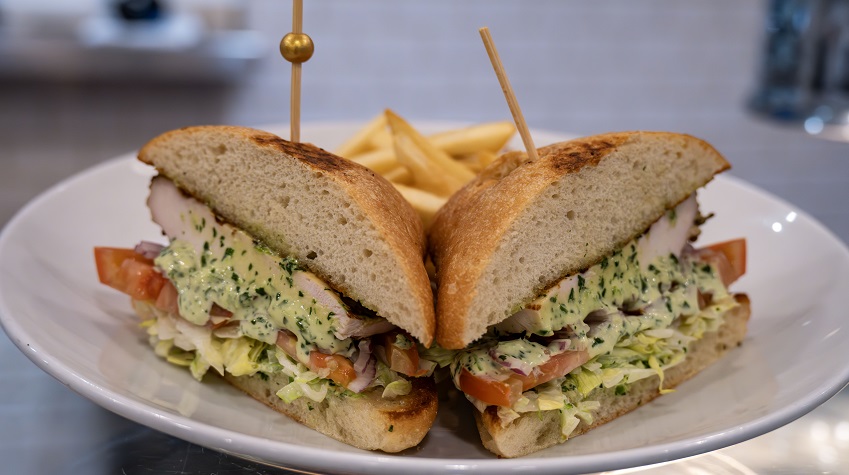Articles
July 02, 2025
Food costs: Beef and chicken are the story of the summer
Smaller supply + larger demand equals higher prices for operators.

Some operators are introducing more chicken items this summer in hopes they'll counter some of the pain higher beef prices are causing.
Increased consumer demand for and a tighter supply of proteins is resulting in restaurants paying higher prices for beef and chicken this summer, a restaurant industry commodities analyst indicates.
According to Bill Lapp, president of Omaha, Neb.-based Advanced Economic Solutions, costs for those items will remain higher throughout the summer—except for chicken wings, which he says have “unexpectedly dropped in price.”
“Right now, there is a tightness in the U.S. protein supply, especially where beef is concerned, due to reduced cattle herds that could go on for years before they’re replenished,” he says. “Some ground beef cuts are now at record levels, and chicken breast prices, while higher than anticipated, are still lower than the costs associated with beef.”
Lapp adds that even though beef is an important item for a lot of restaurants, some operators, because of the tight supply, are starting to introduce a variety of chicken items this summer. “The hope is that they'll take away some of the pain that higher beef prices are causing.”
There are some bright spots, however, Lapp says, particularly when it comes to the egg market. The average wholesale price on a dozen eggs is currently $3.12 compared to $4.26 six months ago when the flocks were decimated by Avian Influenza outbreaks and had to be culled to keep the disease at bay. It is currently under control until the next outbreak, which could occur during the fall or winter.
“Feed costs coming down should lead poultry producers to expand operations and, at the same time, encourage dairy farmers to grow their herds, thus increasing milk, cheese, and butter supplies, which would reduce prices on those items,” Lapp says.
In late June and early July, the price of block cheese fell below $1.60 per pound.
Regarding tariffs, Lapp says that while uncertainty remains, their continued postponements have not really affected food prices—yet.
“We haven’t seen that much in the way of changes or shifts on pricing,” he says, “but there are a lot of items that could be impacted if the proposed tariffs aren’t deferred again on July 9. Certain ingredients from outside of North America, that we’re solely dependent on, like coffee and cocoa, still face 10% tariffs, and nonfood items could dramatically affect costs.”
According to Bill Lapp, president of Omaha, Neb.-based Advanced Economic Solutions, costs for those items will remain higher throughout the summer—except for chicken wings, which he says have “unexpectedly dropped in price.”
Looking for alternatives
As a result, Lapp says some operators might look at offering, and marketing, alternative proteins or even changing menu items and raising their prices to offset the rising food costs. Or they may simply choose to accept higher costs and narrower margins for the short term.“Right now, there is a tightness in the U.S. protein supply, especially where beef is concerned, due to reduced cattle herds that could go on for years before they’re replenished,” he says. “Some ground beef cuts are now at record levels, and chicken breast prices, while higher than anticipated, are still lower than the costs associated with beef.”
Lapp adds that even though beef is an important item for a lot of restaurants, some operators, because of the tight supply, are starting to introduce a variety of chicken items this summer. “The hope is that they'll take away some of the pain that higher beef prices are causing.”
There are some bright spots, however, Lapp says, particularly when it comes to the egg market. The average wholesale price on a dozen eggs is currently $3.12 compared to $4.26 six months ago when the flocks were decimated by Avian Influenza outbreaks and had to be culled to keep the disease at bay. It is currently under control until the next outbreak, which could occur during the fall or winter.
Sunny skies are good for crops and dairy prices
Hearty corn and wheat crops, the result of favorable weather conditions, have led to a reduction in grain prices, which is good for poultry producers as well as dairy farmers, he says.“Feed costs coming down should lead poultry producers to expand operations and, at the same time, encourage dairy farmers to grow their herds, thus increasing milk, cheese, and butter supplies, which would reduce prices on those items,” Lapp says.
In late June and early July, the price of block cheese fell below $1.60 per pound.
Regarding tariffs, Lapp says that while uncertainty remains, their continued postponements have not really affected food prices—yet.
“We haven’t seen that much in the way of changes or shifts on pricing,” he says, “but there are a lot of items that could be impacted if the proposed tariffs aren’t deferred again on July 9. Certain ingredients from outside of North America, that we’re solely dependent on, like coffee and cocoa, still face 10% tariffs, and nonfood items could dramatically affect costs.”
Sign up for our Newsletter
The latest news from the National Restaurant Association, published every other Thursday
By clicking Submit I agree to receive email communications from the National Restaurant Association and agree to our Privacy Policy(Opens in a new window).